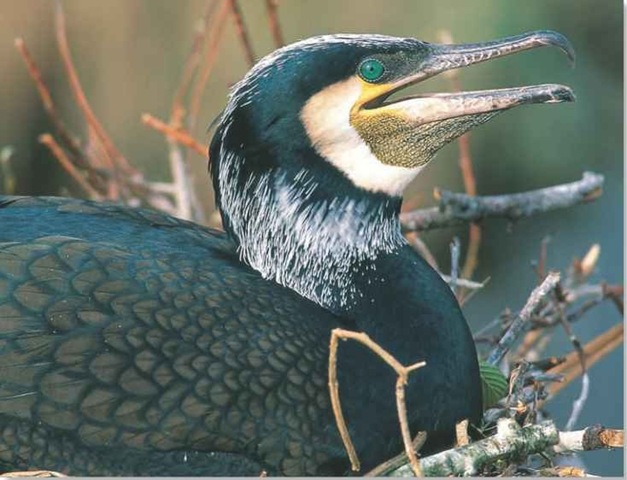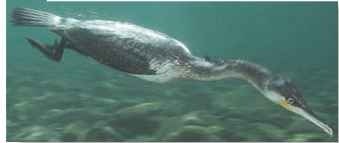ORDER
Pelecaniform.es
FAMILY
Phalacrocoracidae
GENUS & SPECIES
KEY FEATURES
Pursues fish underwater at high speed, following . their every twist and turn with its sinuous body Lacks naturally water-repellent plumage, so it must spend hours sunbathing to dry its feathers This sociable species fishes, roosts and breeds in groups — often with other waterbirds
WHERE IN THE WORLD?
Scattered populations on coasts, rivers and lakes in Greenland, eastern North America, Europe, Africa, Asia, India, Japan and Australia
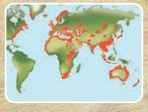
Lifecycle
The great cormorant’s loafing habits and its ungainly movements on land belie its agility underwater; here it’s a devastatingly effective predator that streaks along as if jet-propelled.
Habitat
Equally at home in freshwater and saltwater, from the Arctic to the tropics, the cormorant exploits a huge habitat range. At sea, it’s rarely found far from the coast, feeding in shallow waters, often around sheltered bays and estuaries. Inland, it occurs on lakes, wide rivers, flood-waters and lagoons.
As the cormorant regularly needs to leave water to dry its plumage, it usually stays close to convenient perches. These include rocks, banks of mud or sand, partially submerged trees, buoys and utility poles.
Colonies nest on cliffs or rocky coasts, but inland it tends to seek out stands of tall trees beside water Occasionally, it breeds in reedbeds or simply on bare ground.
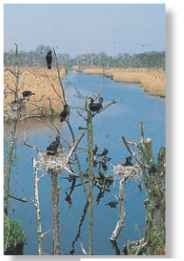
A Sticks…
Droppings from a colony of cormorants coat trees white, often killing them.
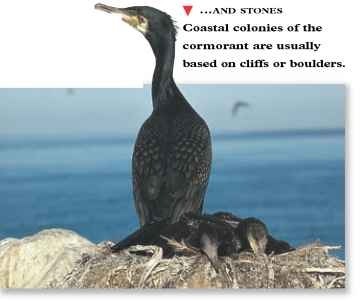
Food & feeding
fast fisher

Down in one…
A cormorant juggles a large flatfish caught in its last dive so it can be consumed whole. It tosses back its head to swallow.
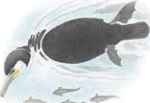
Down again…
Dipping its head under the water’s surface, the cormorant cranes its snakelike neck in all directions to locate prey. It dives without a splash
The cormorant fishes cooperatively with the dalmatian pelican in northern Greece. The pelican helps the cormorant fish by blocking out the sun’s glare with its shadow. In return, it picks off the fish that flee to the surface to escape the cormorant.
The ancient practice of training cormorants to “fish” for their masters continues today in China. A collar around a bird’s throat prevents it from swallowing fish it captures; the fish are retrieved when it surfaces beside the fishing boat.
Behavior
The cormorant often flies fast and low over the water. Its dives tend to be short and energetic and are followed by periods of preening and sunbathing. It performs these chores out of the water, unlike many other diving and swimming birds.
As dusk falls, the cormorant leaves the water and flies off to roost in groups. Sometimes, it flies at quite high altitudes. It travels in V-formation or single-file from its feeding grounds to the roost site, which is usually woods or a cluster of tall trees.
In dives lasting about a minute, the cormorant seeks its favorite food: flatfish, blennies and sandeels. Unlike many diving birds, it doesn’t have water-repellent plumage. But it turns this to its advantage by using the weight of its waterlogged plumage to reduce its buoyancy. The wet plumage weighs down the bird, enabling it to swim faster and with precision.
Sticking its neck out Fish up to 24″ long fall prey to the cormorant.
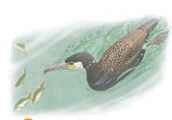
Streaks ahead…
Powerful feet, set far back on the body, propel the cormorant at great speed underwater and produce spurts of acceleration.
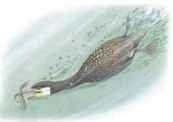
No escape
The bird singles out a victim and pursues it relentlessly, echoing its every twist and turn. Small fish are swallowed immediately.
Feather manicure Cleaning plumage is a time-consuming daily task.
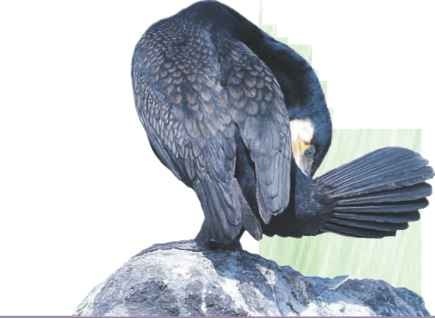
Conservation
The great cormorant isn’t in any immediate danger. But, like all seabirds, it fares badly where oil spills
contaminate the seas. Fish farmers also persecute inland populations.
Breeding
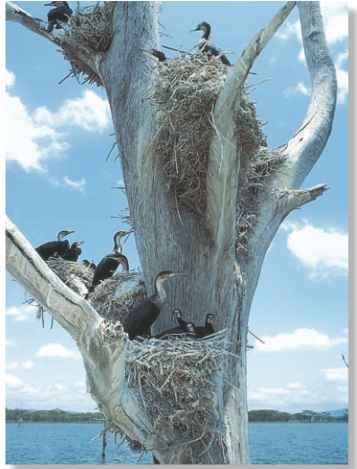
A High society Usually silent, the cormorant communicates with various deep grunts at breeding colonies.
The cormorant seeks the company of other waterbirds when nesting, especially in the tropics. The mixed breeding colonies of cormorants, ibises, spoonbills, herons and egrets in waterside trees are a common sight throughout its tropical range. In the U.S., it often nests near gull and seabird colonies.
The male selects the nest site, then brings material for his mate to build a nest. This is a platform of sticks, reeds and other vegetation, lined with seaweed in coastal areas and grass or leaves inland. Nest-building takes up to five weeks; during this time the pair may fend off neighbors that try to steal their nest material.
Both parents brood and feed their chicks, which hatch naked and dark-colored. After a week chicks are covered with down. Even when they fledge (after seven weeks), young continue to beg food from their parents, on whom they depend for 2-3 months more.
PROFILE
Great Cormorant
After out-maneuvering fish in brief but frenetic underwater chases, the great cormorant must stretch out in the sun to dry its wings.
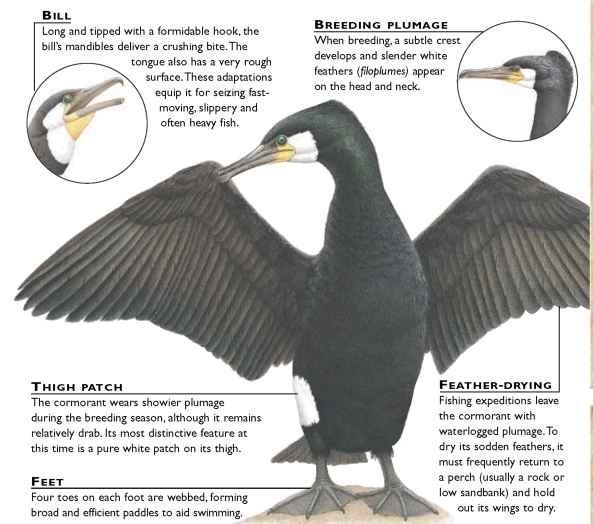
Creature comparisons
Over a large part of its European range, the great cormorant shares its marine habitat with the similar-looking, but smaller, European shag (Phalacrocorax aristotelis).The shag is an almost exclusively fish-eating, saltwater species of cormorant that inhabits rocky coasts and islands. It rarely moves inland.
When breeding, the shag’s plumage acquires a green gloss, which matches its emerald-green eyes. Its breeding dress is completed by a small crest that protrudes from its forehead when erect. Both birds have a reptilian appearance with their serpentine necks and scaly-looking plumage.
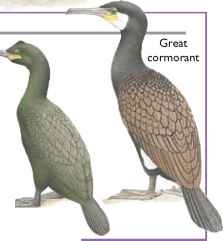
European shag
| VITAL STATISTICS Weight 4-6 lbs. Length 2.5-3′ |
|
| Wingspan | 4-5′ |
| Sexual Maturity Breeding Season |
3-5 years April-June in Northern Hemisphere; all year in tropics |
| Number of Eggs | 2-6, normally 3 or 4 |
| Incubation Period | 27-31 days |
| Fledging Period | 50 days |
| Typical Diet | Fish, with some crustaceans and also amphibians |
| Lifespan | 10-12 years |
RELATED SPECIES
• There are 29-33 species of cormorant in the Phalacrocoracidae family. All are aquatic and completely black or blackish with white patches. Ten species are endemic to islands — they’re each confined to just a few remote islands in southern oceans. The Galapagos cormorant (Phalacrocorax harrisi) cannot fly. Close relatives include pelicans, gannets and boobies.
